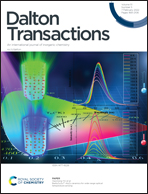State of the art developments and prospects of metal–organic frameworks for energy applications
Abstract
The progress on technologies for the cleaner and ecological transformation and storage of energy to combat effluence or pollution and the impending energy dilemma has recently attracted interest from energy research groups, particularly in the field of coordination chemistry, among inorganic chemists. Carriers for storing energy or facilitating mass and e− transport are considered significant for energy conversion. Accordingly, considering their properties such as large surface area, low cost, customizable pore diameter, tunable topologies, low densities, and variable frameworks, MOFs (metal–organic frameworks) and their derivatives are well-suited for this purpose. MOFs are an innovative category of porous and crystalline materials, which have gained significant interest in recent years. Thus, herein, we highlight the state of the art progress on MOFs for energy-based applications, as perfect compounds and elements in compound assemblies for converting solar energy, lithium-ion arrays, fuel devices, hydrogen production, photocatalytic CO2 reduction, proton conduction, etc. In addition, the substantial progress achieved in the production of various composites and derivatives containing MOFs with particular focus on supercapacitors and gas adsorption and storage is summarized, concentrating on the correlation between their coordination structural frameworks and applications in the field of energy. The current improved strategies, challenges, and future prospects are also presented in view of the coordination chemistry governing the structural modification of MOFs for energy applications.

- This article is part of the themed collection: 2021 Frontier and Perspective articles


 Please wait while we load your content...
Please wait while we load your content...